Prime Cost Key Takeaways:
- Prime cost is the sum of a restaurant’s food (COGS) and labor expenses, typically targeted between 55% and 65% of total revenue. For multi-unit bistro operators, setting a chain-wide target below 62% is realistic and sustainable.
- Top-performing restaurants calculate prime cost weekly per location and share topline trends in team huddles to proactively manage expenses and maximize group profitability.
- Leveraging POS systems, inventory tracking, and labor software with customizable alerts helps multi-location owners streamline data collection and lets managers spot small leaks before they impact the group’s bottom line. For more ideas, see restaurant operations success tips.
- Strategies like strategic menu engineering, labor forecasting, real-time cost dashboards, and recurring supplier negotiations are critical for keeping prime costs on target—especially when scaling up or facing volatile food/labor markets.
Restaurant profits are often razor-thin, and without control over your numbers, even a packed dining room can lose money. The key? Top operators focus relentlessly on prime cost—your combined food and labor expenses.
It’s the clearest indicator of your restaurant’s financial health. And if you run multiple locations, managing prime cost is even more critical, as small leaks at one site can drag down the entire group.
Mastering prime cost means unlocking steady profits and less stress. Here’s how to track it accurately, optimize it across locations, and avoid the costliest mistakes—proven strategies whether you run one restaurant or many.
Understanding Prime Cost and Its Importance

What Is Prime Cost?
In restaurants, prime cost is the total of your Cost of Goods Sold (COGS) and all labor expenses. COGS means ingredients, beverages, and every food item bought for the menu. Total labor covers wages, salaries, taxes, and benefits for everyone, from Chef and Line Cook to Dishwasher and Bartender staff. For multi-location owners, remember to include salaried managers and anyone who works shifts between different units.
Prime cost reflects what you’re spending on the two biggest controllable costs in your operation. If you keep this number under control, you’re on your way to profitability—a non-negotiable if you’re balancing both consistency and the need for local flair across locations.
Why Prime Cost Matters More Than Any Other Metric
Prime cost is the clearest indicator of how efficiently a restaurant runs, and is one metric every GM should keep front and center. Sure, food cost percentage and sales volume are important. But only prime cost gives you the whole picture by combining both product spend and staffing costs to show true profit impact.
Try implementing a quick “Number Check-In” meeting: run through prime cost for each store at least once a week, so everyone stays focused on what matters.
To address all staffing angles, check out this how to hire restaurant staff fast guide.
Most top restaurant owners shoot for a prime cost somewhere between 55% and 65% of revenue. Full-service and bistro groups usually aim at or below 62%—which is sensible, leaving a little wiggle room for market bumps while protecting margins. Go above that, and watch profit slip through your fingers. In short, prime cost discipline underpins a strong, scalable restaurant group.
How Top Owners Calculate and Track Prime Cost
Running a profitable restaurant group starts with controlling your biggest costs: food and labor. That’s where prime cost comes in. It’s the single most important number multi-unit operators watch weekly—and top owners know exactly how to calculate, monitor, and optimize it across locations.
Collecting Accurate Data Across Multiple Locations
It all begins with precision. You want up-to-date food purchasing data, hands-on inventory counts, and accurate wage records—store by store. Restaurant groups that win at this game use processes like:
- Logging invoices immediately into a centralized dashboard;
- Requiring precise timekeeping for all team members, at every location (shared staff too);
- Reviewing weekly inventory counts and labor reports by restaurant. For more on BOH roles, see the Chef job description overview.
Lots of operators count on their POS and payroll software to deliver real-time reports groupwide, catching cost overruns before they snowball. Set up automatic Slack pings or SMS alerts if a unit’s prime cost creeps above your markers: address small problems now, avoid headaches later.
Calculating Prime Cost Percentage
The standard formula is:
- COGS (food, beverages, packaging, etc.) + Total Labor (wages, payroll taxes, staff benefits)
- Divide the total by total sales for the period (do this for each restaurant then look at your group average)
- Multiply by 100 to get the prime cost percentage
For example, let’s say your food and beverage cost last week was $8,000 and labor ran $7,000, with $25,000 in total sales:
(8,000 + 7,000) / 25,000 = 0.6 or 60%
As a multi-unit operator, it's essential to calculate prime cost by location every week. Weekly reports help flag unusual trends before they become costly. For example, if a newly opened location starts ordering 30% more produce than similar units—but without a matching increase in sales—that could signal over-ordering, waste, or even poor portion control.
In cases like this, regular tracking allows operators to step in quickly, correct the issue, and avoid thousands in unnecessary COGS by the end of the month. Without that weekly visibility, small mistakes can quietly drain margins across the group.
Setting Benchmarks and Tracking Over Time — Location by Location
Prime cost isn’t “set it and forget it”—numbers will shift. Smart multi-unit owners assign location-level goals (maybe 60% at high-volume shops, 62% for a newer spot) and keep one eye on both single-unit and overall averages. Weekly or monthly reviews show where costs spike, dip, or slowly creep out of line. Consider sharing restaurant operations best practices at site manager meetings.
It also surfaces seasonal swings, wage pressures, or slowdowns, giving you and your GMs a chance to adjust course early. Quick wins and system tweaks from one unit can easily improve margins at others—just don’t keep successes siloed.
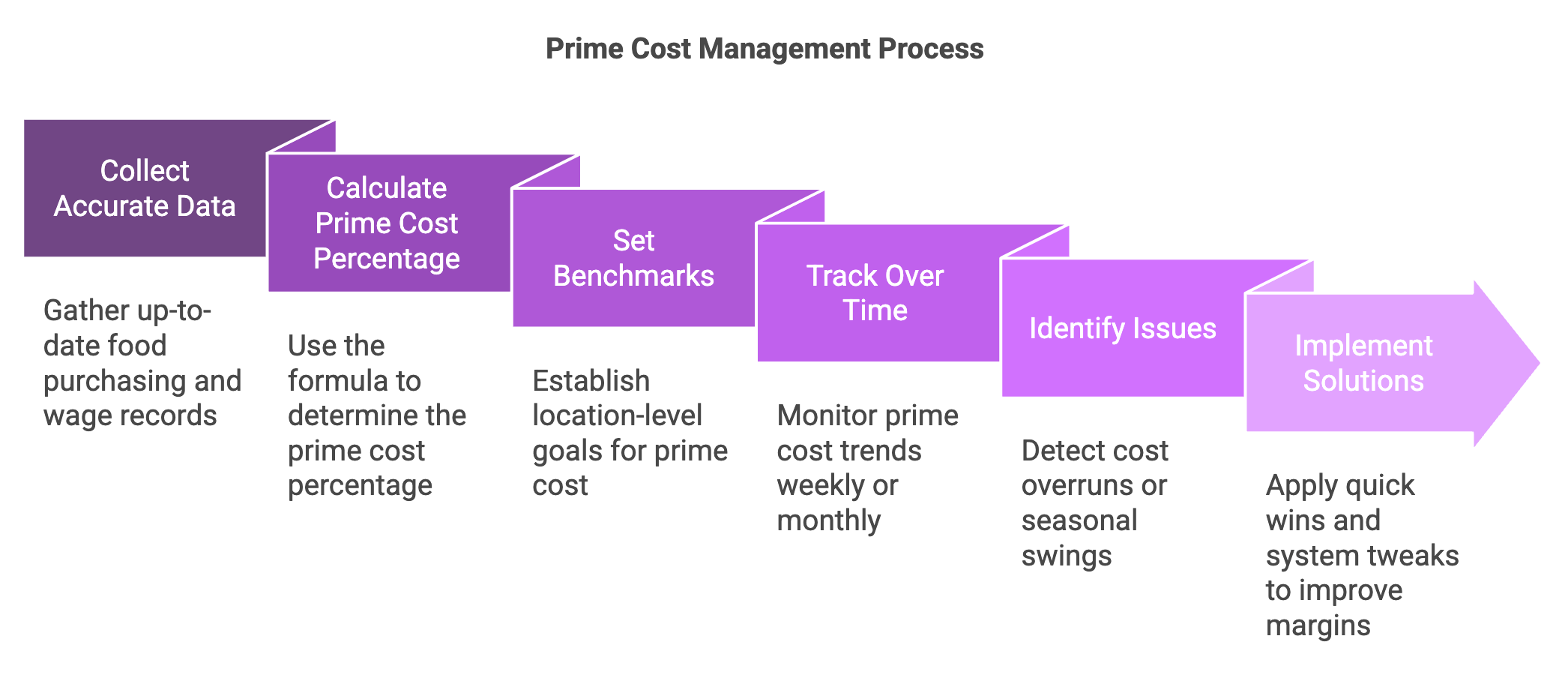
Prime Cost Secrets That Top Restaurant Owners Use
The most successful multi-unit restaurant operators treat prime cost like a weekly performance scorecard—not a monthly surprise. By digging into data, empowering teams, and using the right tools, they stay ahead of cost creep while keeping operations flexible and profitable across every location.
Strategic Menu Engineering for Multi-Units
Top owners dig deep into menu data, spotlighting high-margin dishes and dropping or tweaking losers. For multi-unit groups, create a shared dashboard so every Chef tracks their own margins, but leave room for local specials or signature ingredients if it fits.
Menus that change seasonally, trims repurposed for staff family meal, and regular Chef/BOH reviews ensure everyone’s pulling in the same direction on prime cost. Plus, it keeps creative juices flowing, which everyone appreciates during menu “reset” week (no matter how stressful).
Smart Scheduling and Labor Management Techniques
Unwatched labor costs balloon fast. Savvy owners get on top of schedules, match labor to real sales, and cross-train so a Line Cook can step in at Prep if needed. In multi-location settings, having shared scheduling tools and policies helps managers flag staffing oddities and shift people around if business ebbs or flows across town.
Keep an eye on daily sales trends and make quick shift adjustments as needed. When volume changes, let your GMs move staff or hours groupwide—no need for a flurry of approval requests for every tiny change. For more on hiring the right staff, see effective restaurant staffing techniques.
Inventory and Supplier Negotiation Tactics for Scaling
Careful inventory management unearths slow movers, over-orders, and waste. Top owners audit deliveries, keep tight par levels, and check in with suppliers regularly. By pooling purchasing clout across units (and standardizing SKUs when it makes sense), you can usually squeeze in better pricing or more favorable terms.
Try bundling group orders, exploring seasonal ingredient swaps, and reviewing vendor prices chain-wide. A monthly or quarterly call with suppliers, with notes ready, can move the needle—don’t be afraid to push back on costs.
Sometimes, a simple “can you help me hit my margin target or do I need to shop around?” gets the job done.
Technology Solutions For Prime Cost Control at Multi-Unit Scale
There’s no shame in letting technology lighten your load. Good POS systems reveal detailed sales insights and real menu mix data for all locations. Tools like MarketMan, Restaurant365, MarginEdge, or xtraCHEF make inventory counts and par management almost painless—you’ll see both single-unit and group totals on your dashboard.
Payroll platforms (Gusto, 7shifts, etc.) give live overage alerts and instant location comparisons for labor. All of it buys you (and your managers) back hours every week to focus on the stuff that really matters: culture, growth, and team training. To explore how others control costs, see Restaurant Manager responsibilities for cost control tips.
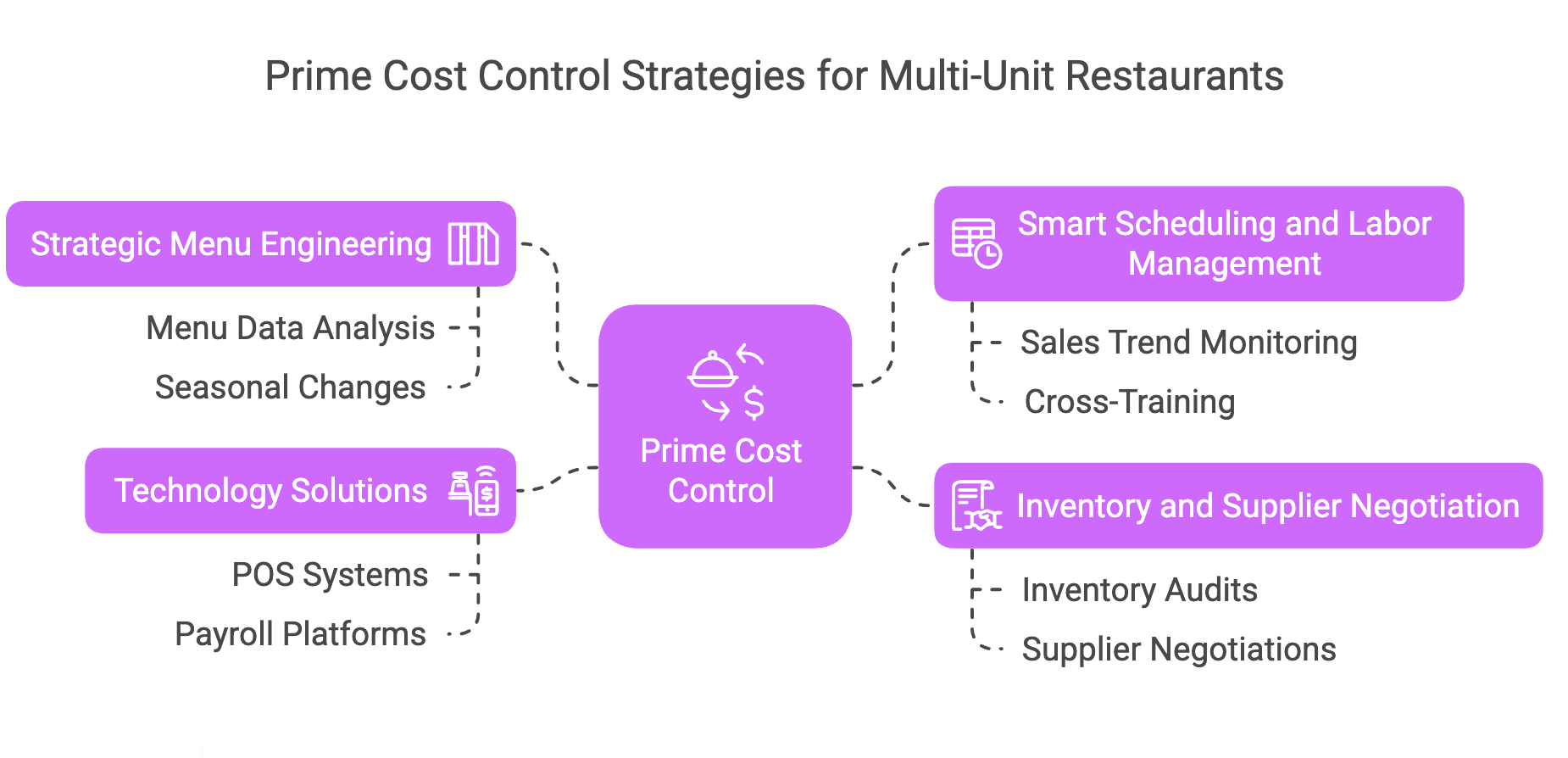
Avoiding Common Prime Cost Mistakes
Even the most experienced restaurant groups can lose ground to small, recurring missteps. Prime cost control isn’t just about big moves—it’s the consistent attention to detail that protects margins over time. Here’s where even top operators can slip, and how to stay ahead.
Ignoring Small, Recurring Overages and Missed Alerts
Small weekly overruns—in overtime, food waste, or sneaky prep waste—don’t seem like much. But left alone, they bleed a group dry over months. Owners who don’t chase these leaks will see margins shrink for no obvious reason. “Leak-hunting” should be a standing line item whenever managers meet, with the power to fix issues—not just report them upwards.
Want to build strong teams for cost management? Take a look at restaurant staff retention strategies.
Set up real-time digital alerts. Weekly emails, Slack nudges, push notifications—just don’t wait for month-end to see the numbers in red.
Neglecting Seasonal and New Location Adjustments
Prime cost targets that are rock-solid in June may spell disaster come January, or after a new spot opens. If you fail to tune menu, schedule, and order volume to the season or launch pace, overstaffing or spoilage will sneak in. Happens to the best of us.
Adjust approaches based on how business ebbs and flows at each restaurant. Share seasonal guides or launch checklists groupwide to help every GM stay ahead.
Overlooking Waste Management—BOH Ownership Gaps
Food waste erodes profit quietly. You stop tracking prep waste, spoilage, or over-portioning, and suddenly COGS is out of control. Sometimes it’s just one location where diligence slips, but it hurts all the same.
The best operators log waste every day, train every kitchen staff on portion discipline, and keep prep plans flexible enough for each location’s quirks. Why not run a friendly competition? Bonuses for waste reduction milestones can help cement a culture of ownership. Find more about the role of management in restaurant management success.
.png)
Prime Cost Mastery: Steps for Immediate Improvement
Tightening prime cost doesn’t always require sweeping overhauls—just disciplined, consistent actions. Top-performing restaurant groups focus on small, repeatable steps that drive margin improvements across every unit. Here’s how to start making a difference this week.
Audit Expenses Regularly
Get everyone used to reviewing invoices, payroll, and orders weekly at every unit—then compare your group for new insights. Spot odd spikes, duplications, or deals waiting to be struck using your group’s purchasing muscle. A shared digital checklist (uploaded to Slack works fine) keeps this routine visible and quick. Restaurant consultants can help refine these processes—explore more in the Restaurant Consultant job description.
Empower Staff with Clear, Simple Metrics
Teach every Server, Chef, and Dishwasher what prime cost is and why controlling it pays off. Go over the week’s results in team huddles (show the numbers with colors and simple visuals). Set straightforward team targets, sweeten the deal with incentives: end-of-week coffee runs, first pick of shifts, or whatever lights a competitive fire.
Digital leaderboards are a plus, but don’t overcomplicate—just sharing a daily Slack post with a quick win keeps the momentum going. When your team sees their own impact, they’ll invest more. Bonus: staff suggestions often lead to the best shortcuts you’ll use groupwide.
Schedule Regular Prime Cost Reviews
Short and frequent beats long and rare. Hold weekly or biweekly manager meets to discuss each location’s prime cost, swap solutions, and agree on what gets fixed next. One smart idea I stole from a mentor: have an “Apple Notes” section everyone can add to as small wins arise—no more reinventing the wheel every time there’s a challenge.
Create a Renewing Prime Cost Strategy
As you grow, pause each year or after a big change to reset expectations. Account for wage bumps, inflation, new benefits, menu overhauls or service tweaks so your benchmarks don’t get stale. Document what’s working—these notes will save you or your ops leaders hours when rolling out the next new site.
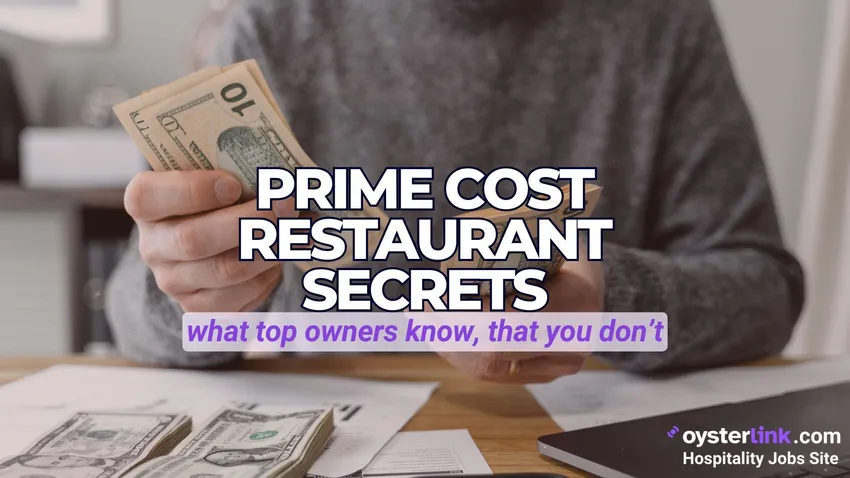
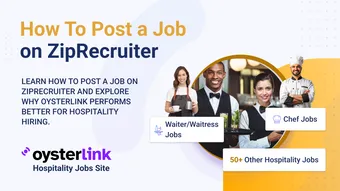

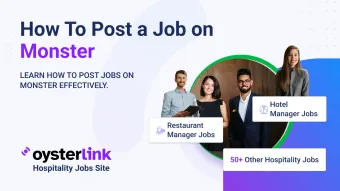
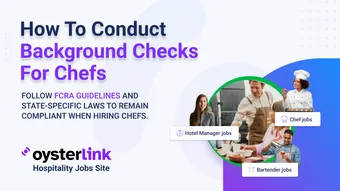


Loading comments...